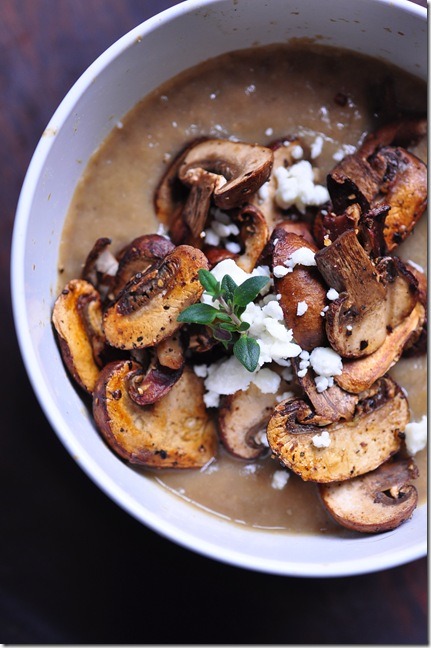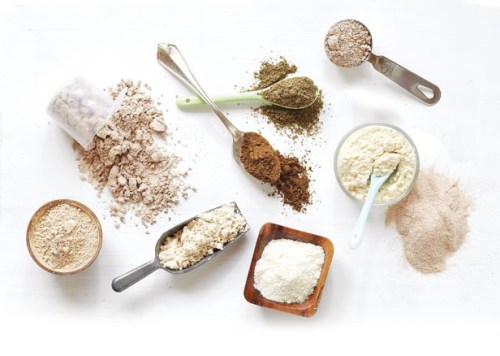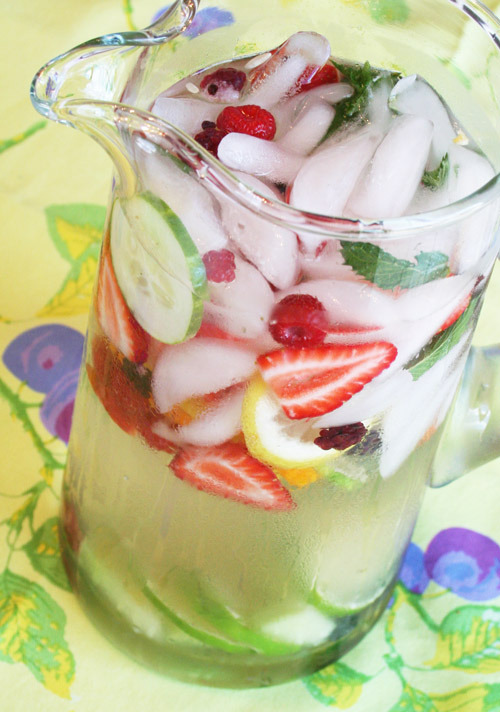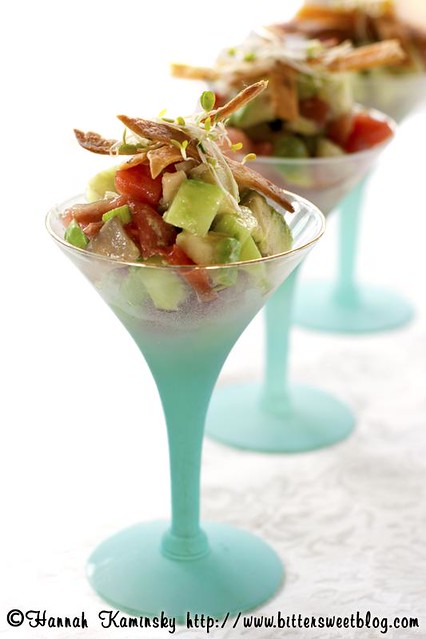VEGAN MUSHROOM SOUP
The consistency of this mushroom soup reminds me of the Campell Creamed Mushroom soup, however, it is made from scratch, only with healthy ingredients and it is vegan. And delicious.
The consistency of this mushroom soup reminds me of the Campell Creamed Mushroom soup, however, it is made from scratch, only with healthy ingredients and it is vegan. And delicious.
- 1 white onion, small diced
- 1 garlic clove, minced
- 1 TB grapeseed oil
- 1 cup of fresh mushroom (e.g. portabella mushroom, shitake, oyster, etc.), cleaned and sliced
- 1 cup of dried mushroom (e.g. shitake, porcini, and/or oyster)
- 1 spring of thyme
- 1/4 cup unflavored almond milk
- 1/2 cup of cooked chickpeas
- 1 ts vegetable bouillon
- optionally: more water, depending on wanted consistency
- salt, pepper to taste
For garnish: more fresh mushroom sauteed in olive oil, salt and pepper and some feta crumbles.
Reconstitute the dried mushrooms in 2 cups of boiling water for about 10min. Heat a pot with the grapeseed oil and fry the onion and garlic until translucent, then add the fresh mushrooms. Saute the mushroom until they are slightly browned. Now, add the dried mushroom with the soaking liquid. Stir and combine well. Bring to a boil, and then turn down the heat to a medium-low simmer. Add the thyme, bouillon, almond milk and the chickpeas. Simmer on medium-low for ca. 30min. Let it cool, and then puree in a really good blender (e.g. vitamix) to get a creamy, smooth consistency. Reheat, add salt and pepper to taste, and serve with sauteed fresh baby bella mushroom and feta crumbles (optional).
Reconstitute the dried mushrooms in 2 cups of boiling water for about 10min. Heat a pot with the grapeseed oil and fry the onion and garlic until translucent, then add the fresh mushrooms. Saute the mushroom until they are slightly browned. Now, add the dried mushroom with the soaking liquid. Stir and combine well. Bring to a boil, and then turn down the heat to a medium-low simmer. Add the thyme, bouillon, almond milk and the chickpeas. Simmer on medium-low for ca. 30min. Let it cool, and then puree in a really good blender (e.g. vitamix) to get a creamy, smooth consistency. Reheat, add salt and pepper to taste, and serve with sauteed fresh baby bella mushroom and feta crumbles (optional).







